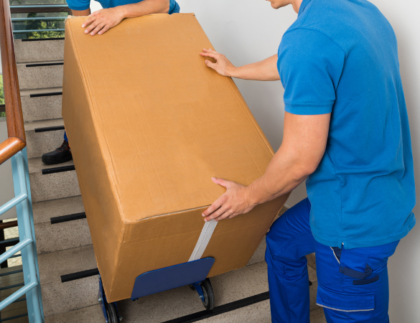
1. Understanding the Challenges of Piano Moving
Pianos are intricate instruments with delicate parts that need careful handling. Upright pianos weigh 400-600 pounds, while grand pianos can exceed 1,200 pounds. This makes it challenging to maneuver through doorways or stairs. Revise their weight and complexity, hiring experienced piano movers skilled in moving delicate items is the safest option.
2. Essential Equipment for Moving a Piano
If you’re attempting to move a piano yourself, having the right equipment is crucial. Here are some tools you’ll need:
- Piano Dolly: A sturdy dolly designed to handle the weight of a piano. Piano dollies allow you to roll the piano across flat surfaces, reducing the risk of damage.
- Piano Moving Dolly: For stairs or tight spaces, it can help you transport the piano safely.
- Piano Board for Moving: it provides a stable platform, which is essential for securing the piano during transportation.
- Protective Blankets and Wraps: To prevent scratches and dents, wrap the piano with protective blankets or padding.
Renting equipment like a piano dolly or piano board for moving can help if you’re handling a smaller move. However, for larger or more challenging moves, you should contact professional piano movers to ensure smooth transportation.
3. Preparing Your Piano for Moving
Before moving a piano, make sure it’s prepared to minimize any risk of damage:
- Close and Lock the Lid: This will prevent any keys from being damaged or pressed during the move.
- Wrap the Piano: Use blankets or protective padding to wrap the piano and secure it with tape or straps.
- Remove Loose Parts: If your piano has removable pieces (music stand or legs) detach them and pack separately.
Properly preparing your piano before moving can significantly reduce the risk of scratches or internal damage.
4. Hiring a Professional Piano Mover
Hiring a professional piano mover is often the best choice, especially for long-distance moves or larger instruments. Trained piano movers know the safest techniques and have specialized equipment to transport your piano securely.
If you’re wondering how much piano movers cost, the price varies based on distance, piano size, move complexity. Many piano moving companies also offer insurance to cover unexpected damage during transit.
5. Tips for Moving Specific Piano Types
- Upright Pianos: These are often easier to move but still require careful handling. Professional movers use straps and dollies to keep them stable.
- Grand Pianos: Moving a grand piano is more complicated because its weight and shape. It typically requires disassembling parts and using a piano moving dolly for safe transport.
6. Why Choose Our Piano Moving Services
If you’re looking for reliable piano moving services for your upcoming move, we offers specialized services for it. Our experienced team has the right piano moving equipment to handle any type of piano. From uprights to grands, we ensure your piano reaches its new location in perfect condition.
Conclusion
Moving a piano requires experience, the right tools, and careful planning. For those considering doing it themselves, renting a piano dolly and securing the proper packing materials can help. However, for large or delicate pianos, hiring a piano moving company can save time. Contact us for a seamless, worry-free piano moving experience – we’re here to keep your cherished instrument safe!









